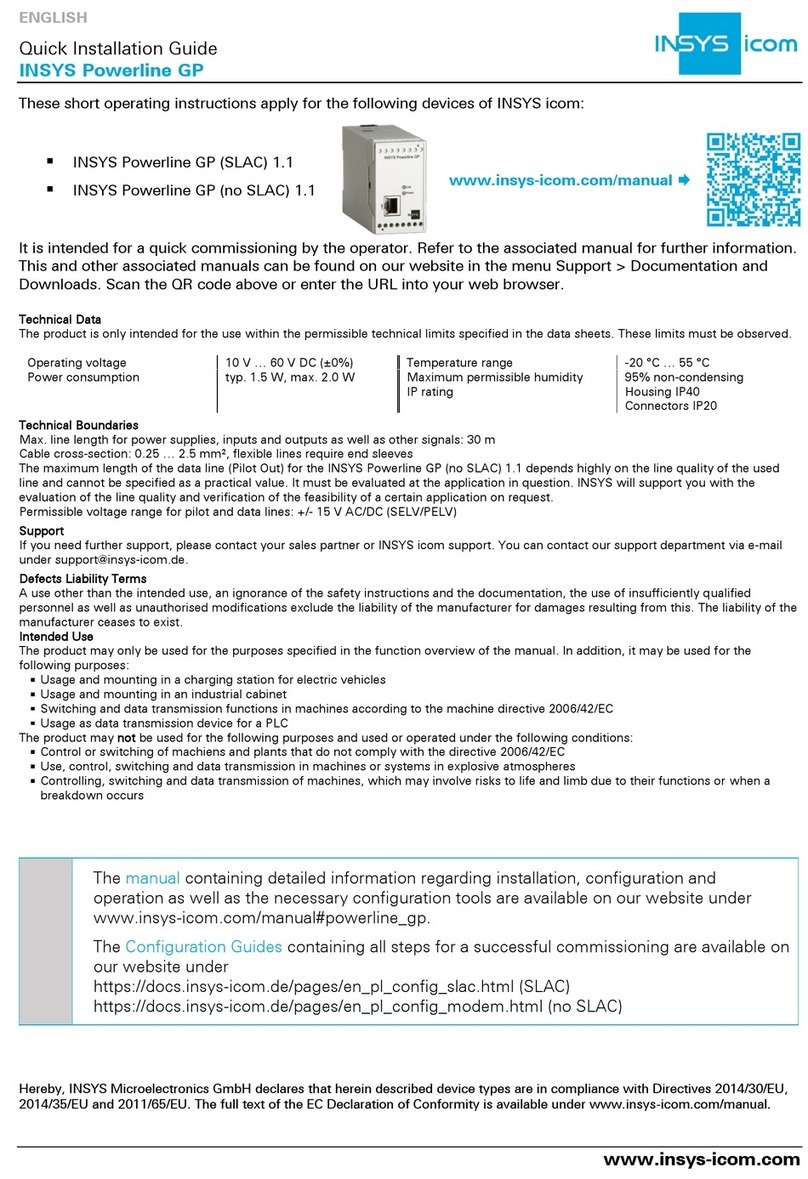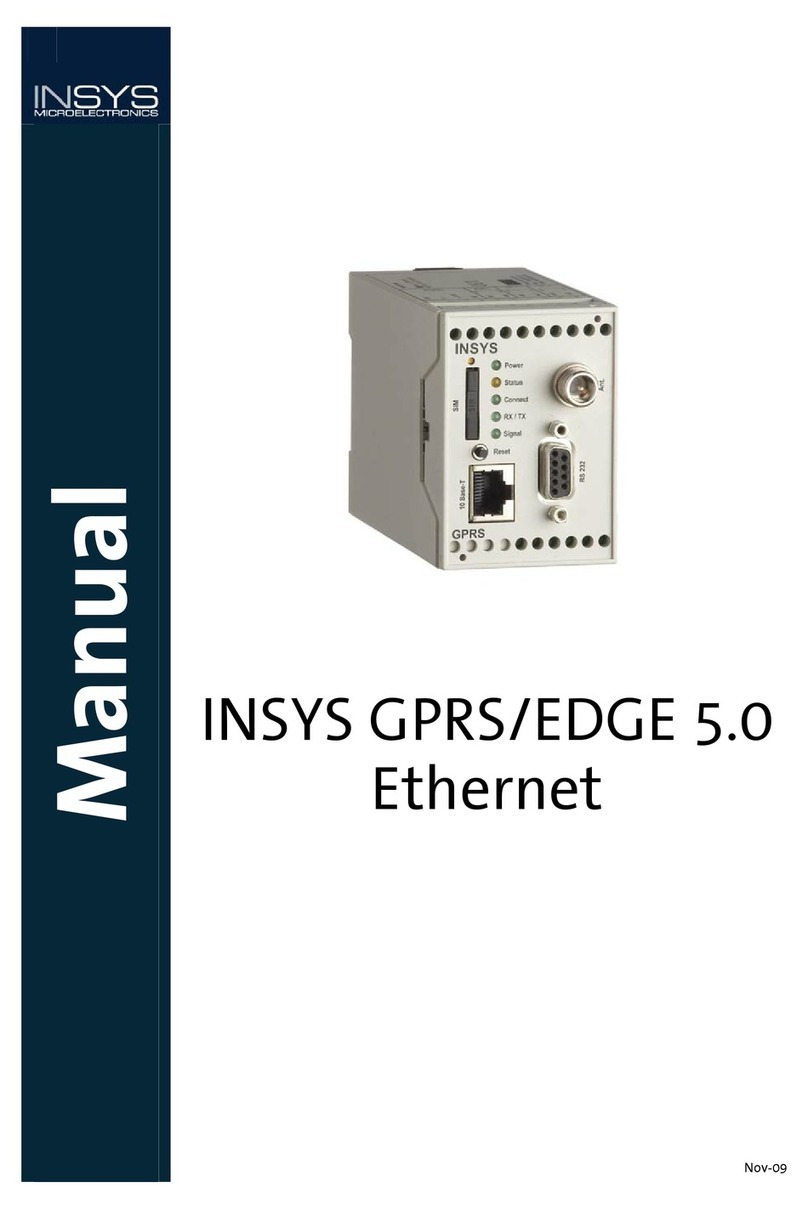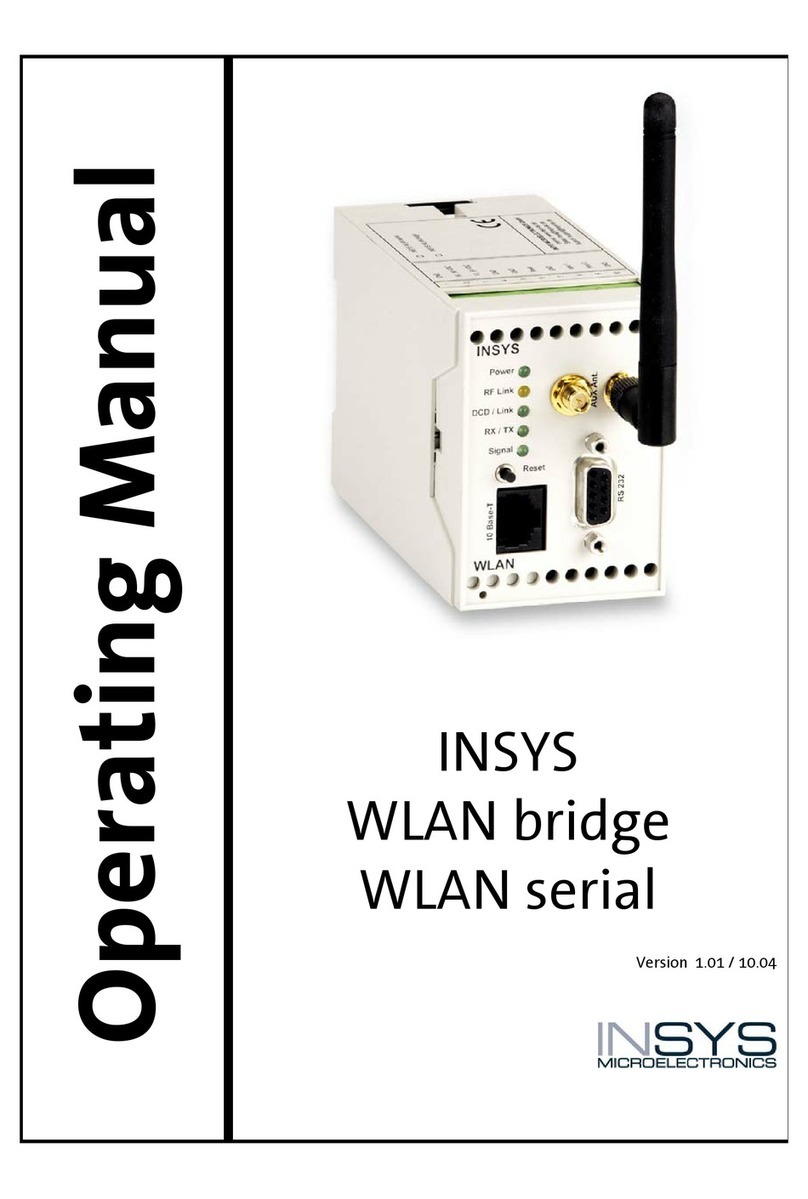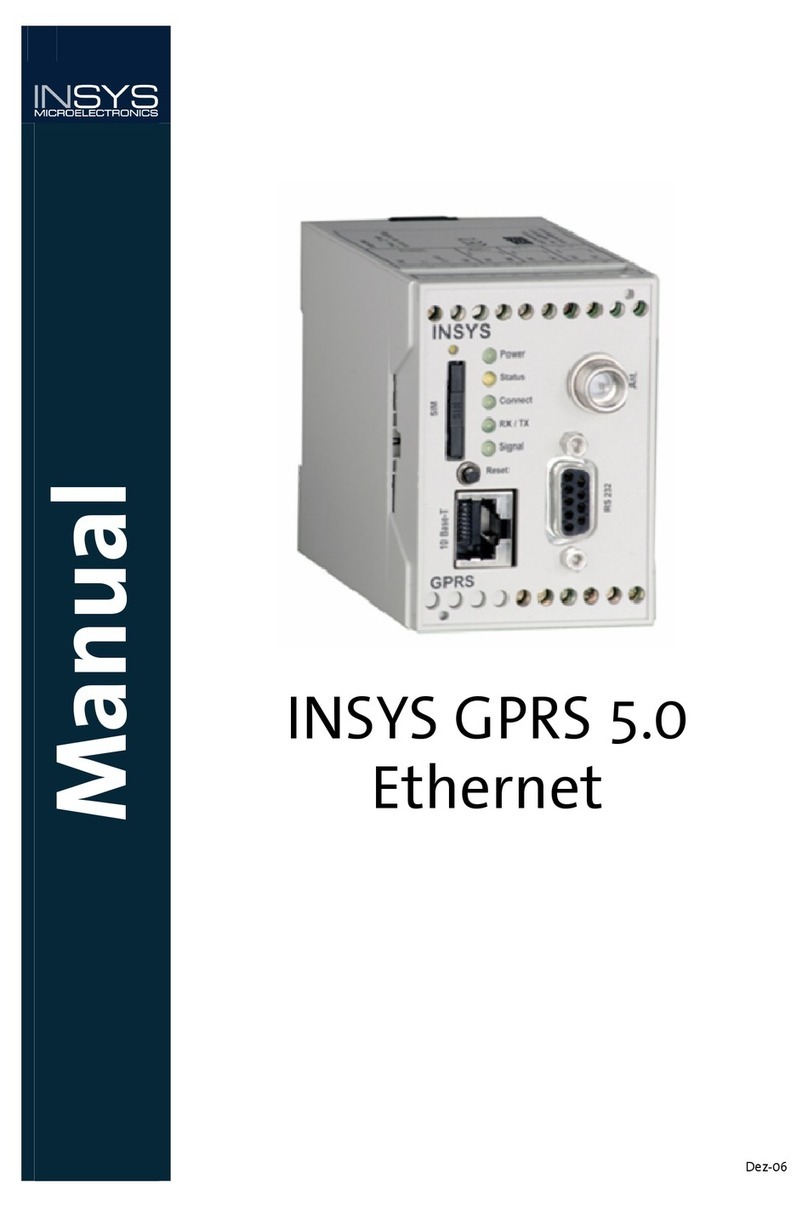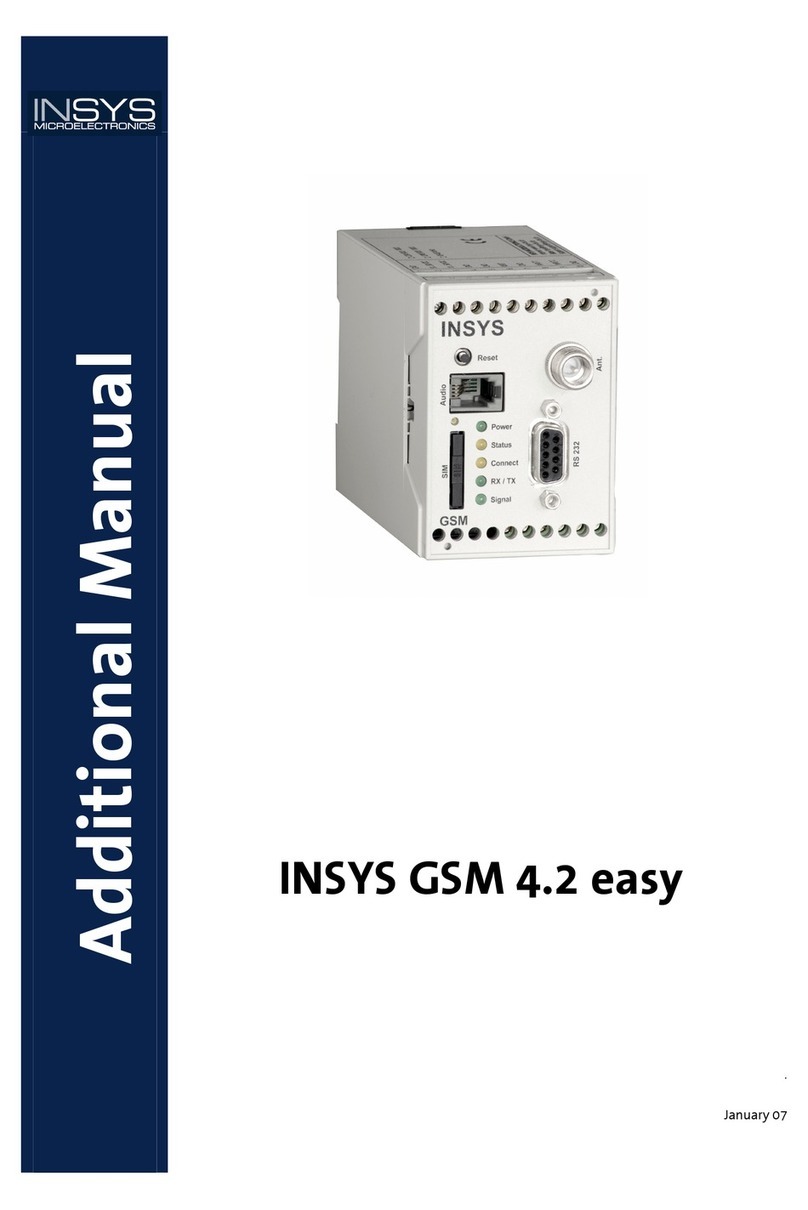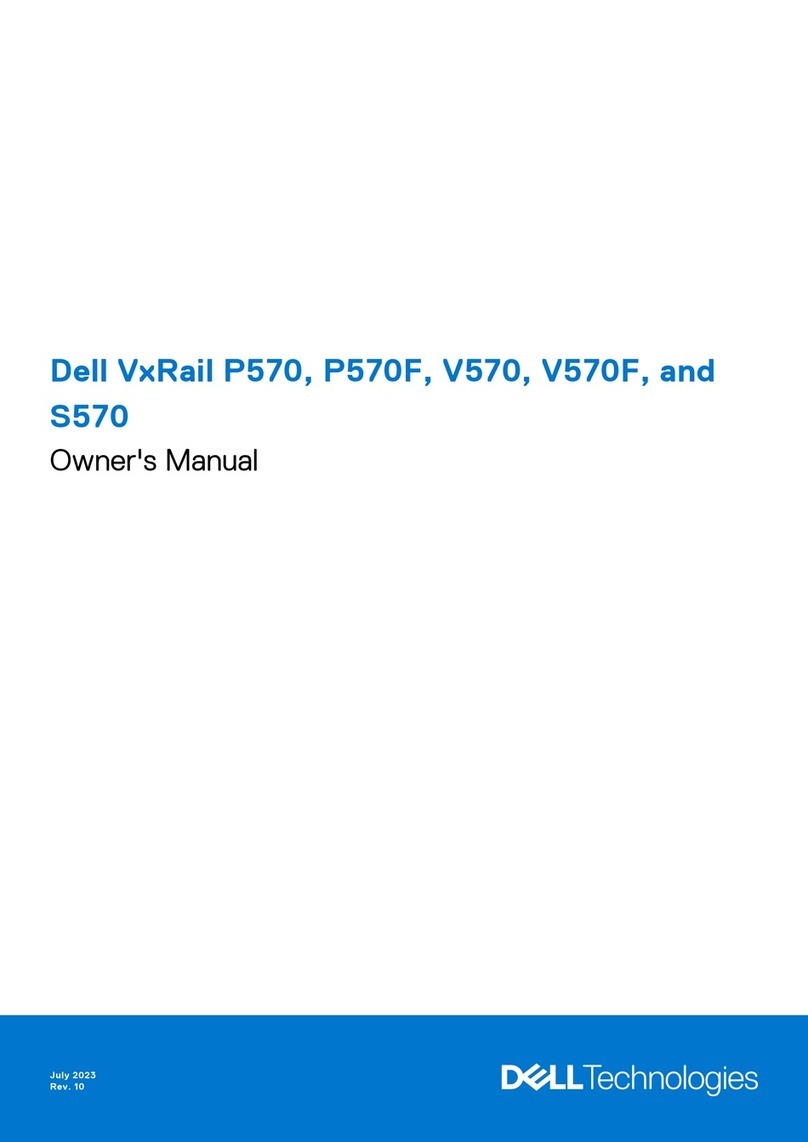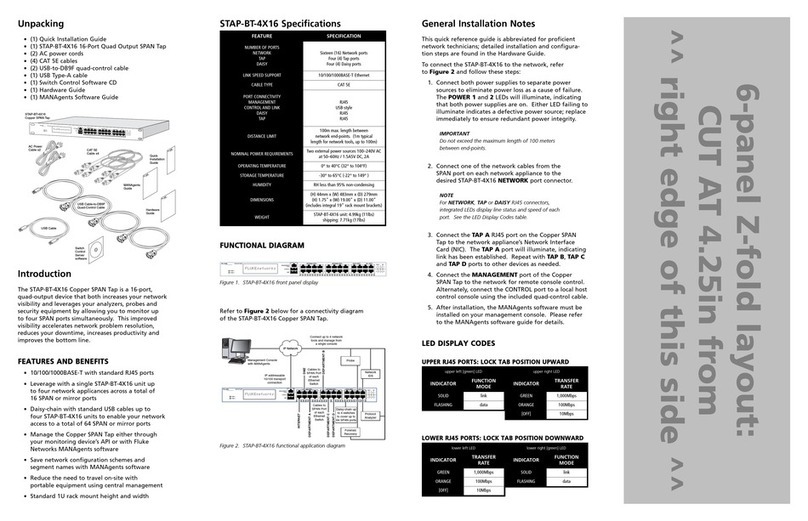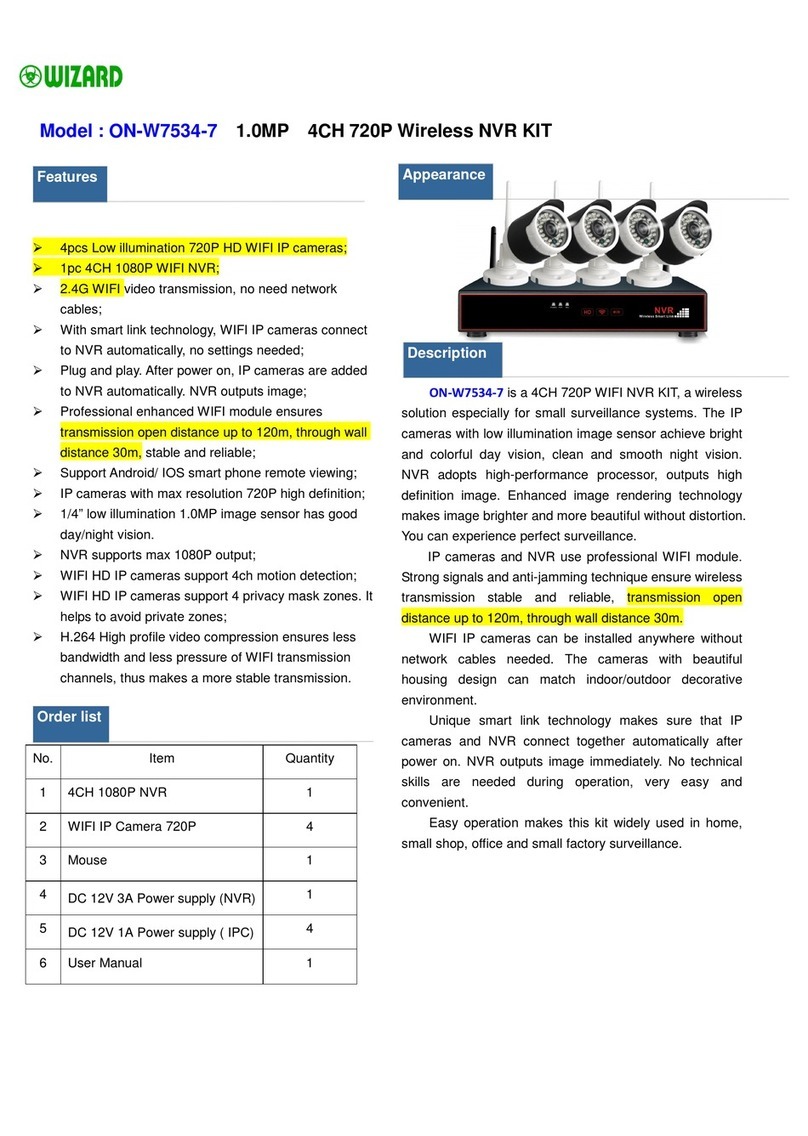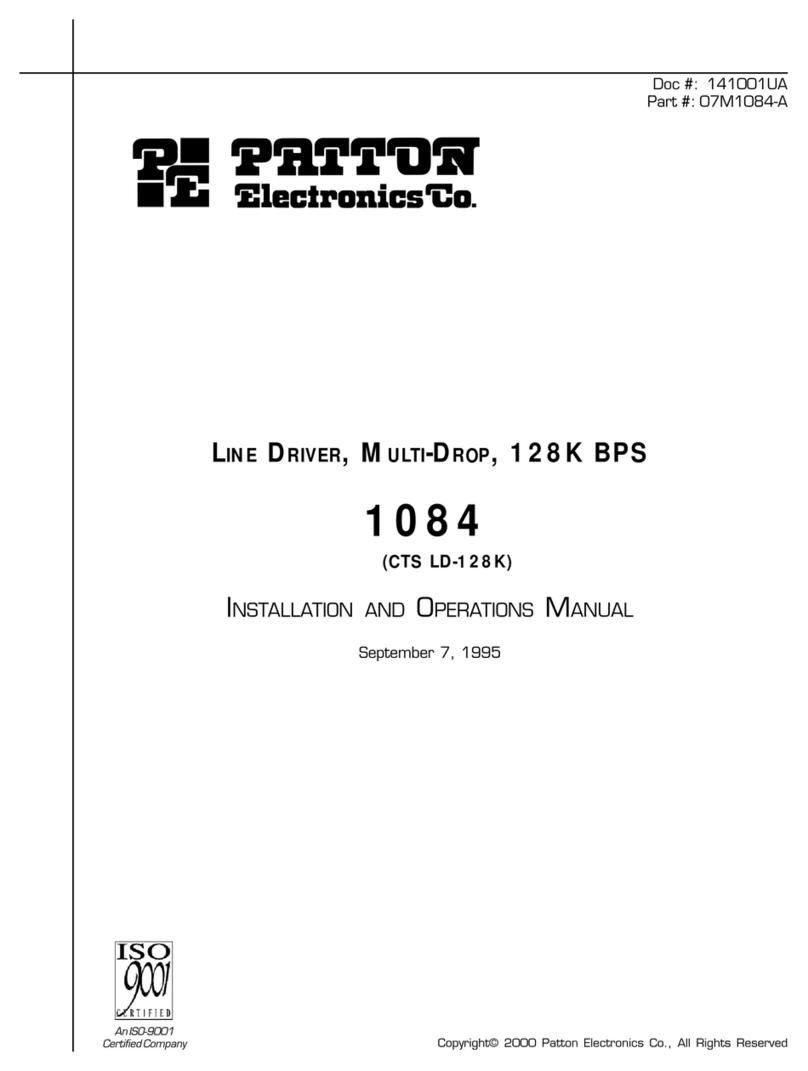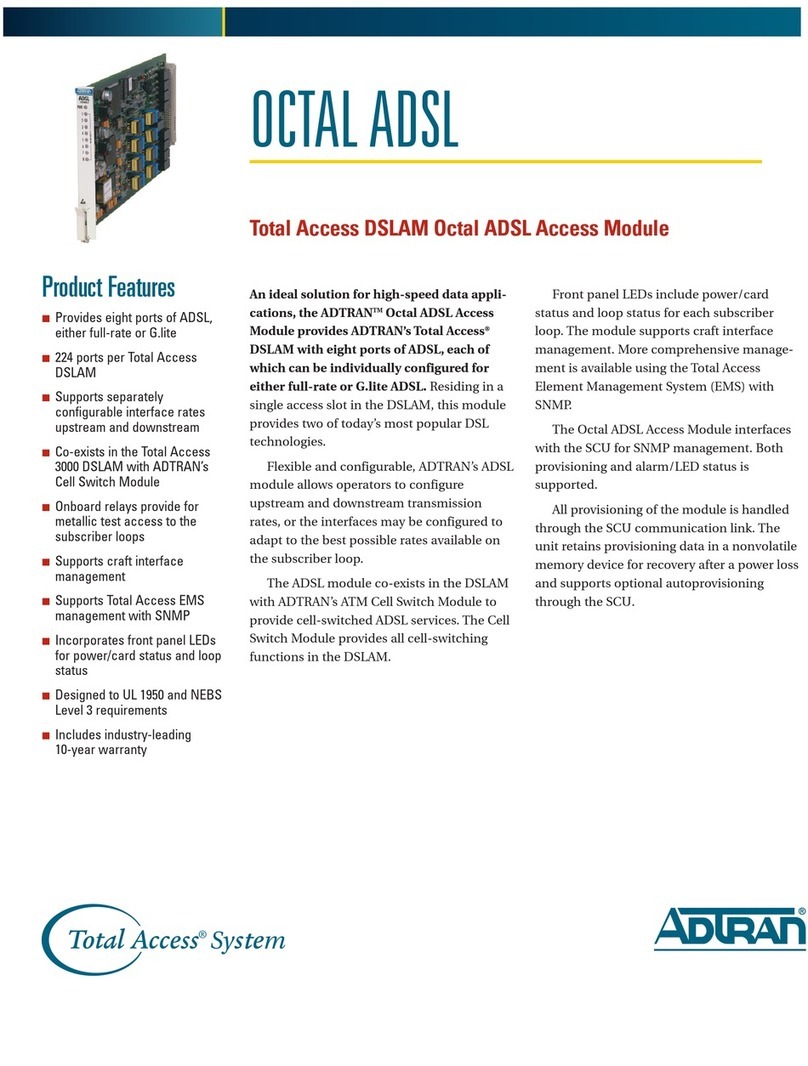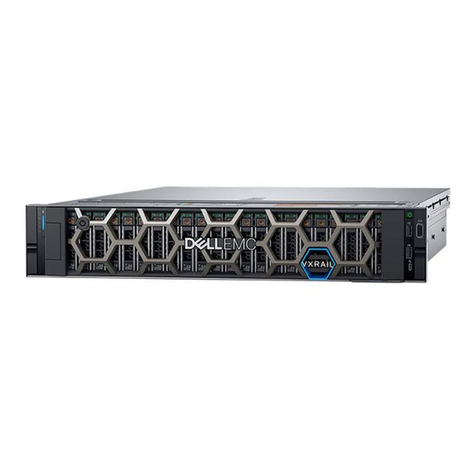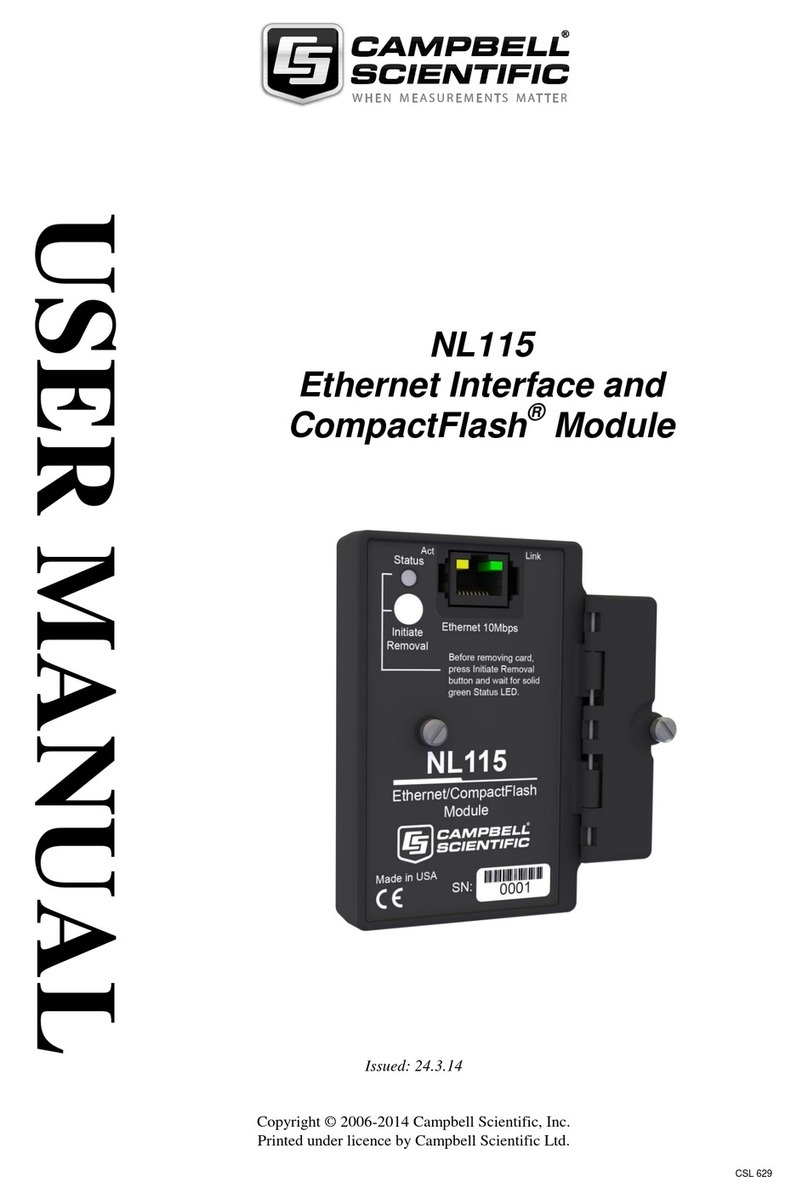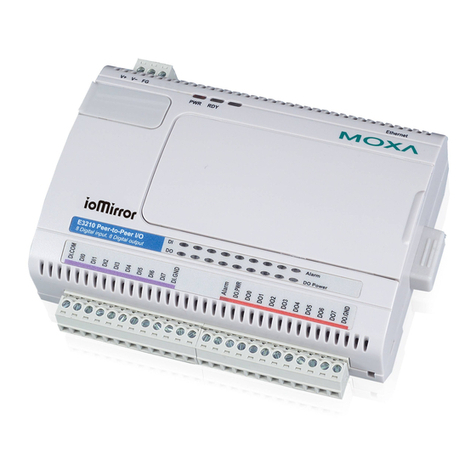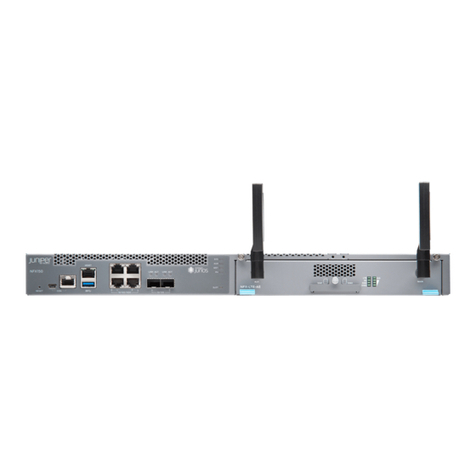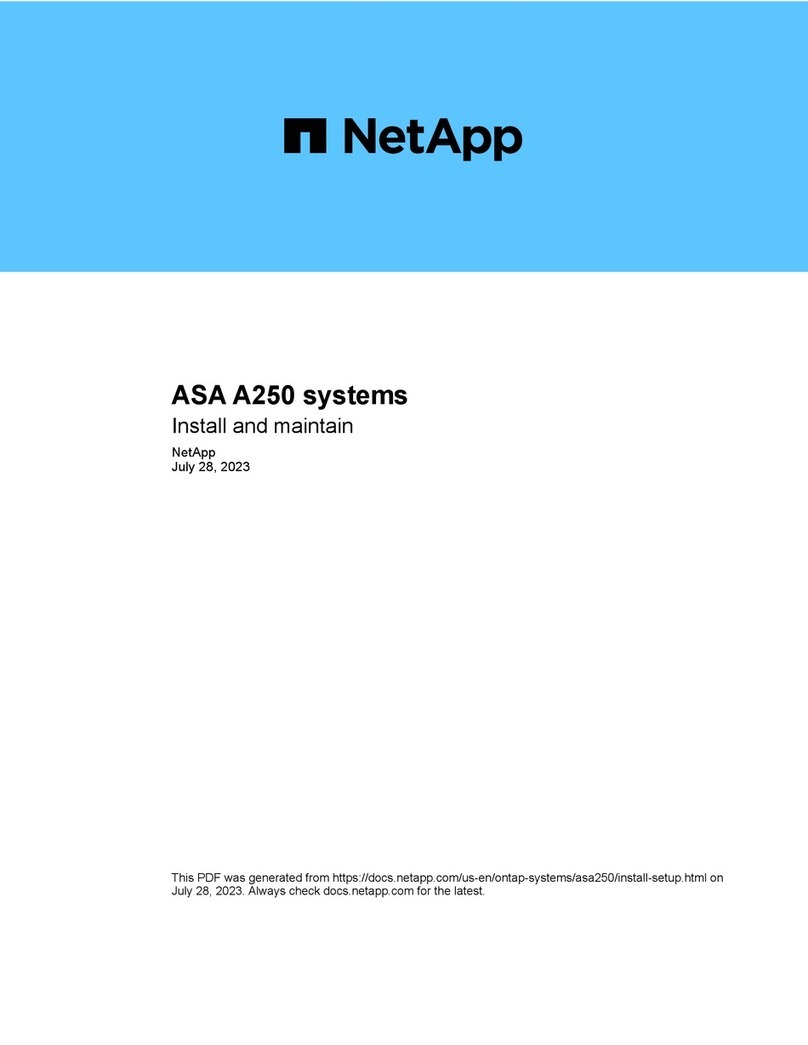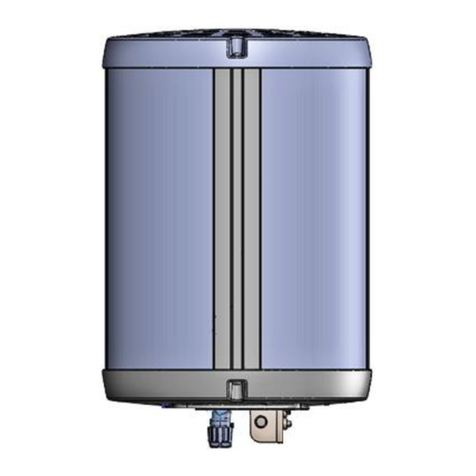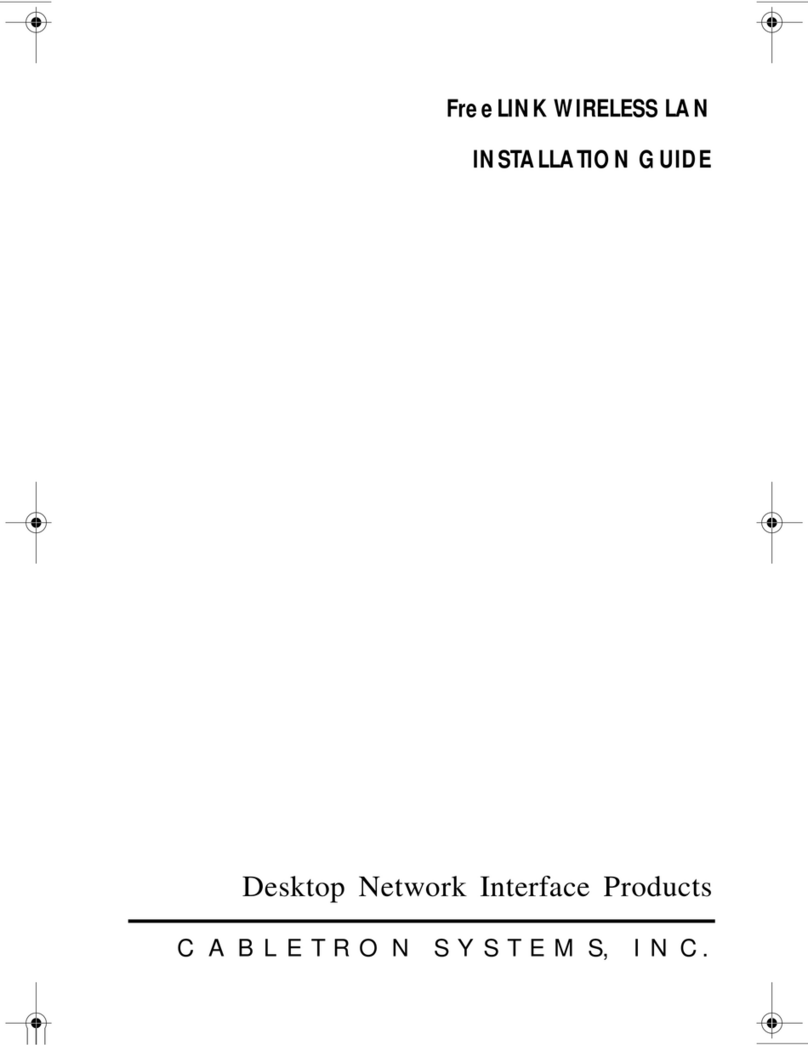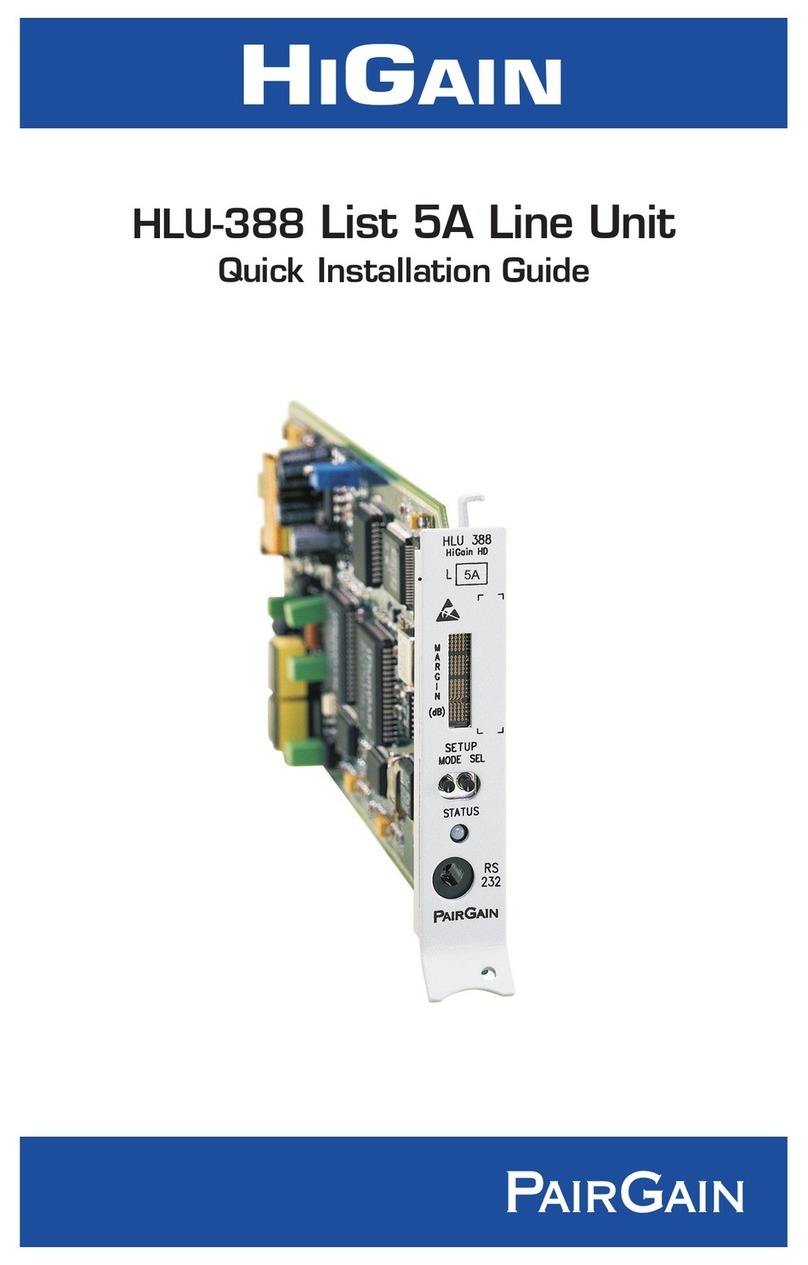INSYS WLAN 2.1 User manual

Manual
INSYS WLAN serial 2.1
Sep-10


Copyright © September 10 INSYS MICROELECTRONICS GmbH
Any duplication of this manual is prohibited. All rights on this documentation and the
devices are with INSYS MICROELECTRONICS GmbH Regensburg.
Trademarks
The use of a trademark not shown below is not an indication that it is freely available for
use.
MNP is a registered trademark of Microcom Inc.
IBM PC, AT, XT are registered trademarks of International Business Machine Corporation.
INSYS ® is a registered trademark of INSYS MICROELECTRONICS GmbH.
Windows™ is a registered trademark of Microsoft Corporation.
Linux is a registered trademark of Linus Torvalds.
Publisher:
INSYS MICROELECTRONICS GmbH
Hermann-Köhl-Str. 22
D-93049Regensburg, Germany
Phone: +49 941 58692-0
Fax: +49 941 58692-45
E-mail: info@insys-icom.com
Internet: http://www.insys-icom.com
Date: Sep-10
Item: 31-22-03.085
Version: 1.2
Language: EN

Contents
1Safety .................................................................................................................. 6
1.1 Usage According to the Regulations..................................................................................6
1.2 Permissible Technical Limits...............................................................................................7
1.3 Defects Liability Terms .......................................................................................................7
1.4 Marking of Warnings and Notes ........................................................................................8
1.4.1 Symbols and Key Words ...................................................................................................8
1.5 Responsibilities of the Operator.........................................................................................9
1.6 Qualification of the Personnel ...........................................................................................9
1.7 Instructions for Transport and Storage..............................................................................9
1.8 Safety Instructions for Electrical Installation.....................................................................9
1.9 General Safety Instructions..............................................................................................10
2Scope of Delivery .............................................................................................. 10
3Technical Data................................................................................................... 12
3.1 Physical Features ..............................................................................................................12
3.2 Technological Features.....................................................................................................13
3.3 CE Conformity ...................................................................................................................13
4Display and Control Elements........................................................................... 14
4.1 Meaning of the Displays...................................................................................................14
4.2 Function of the Control Elements ....................................................................................15
5Connections....................................................................................................... 16
5.1 Front Panel Connections...................................................................................................16
5.2 Terminal Connections on the Top ....................................................................................17
5.3 Terminal Connections at the Bottom...............................................................................18
6Function Overview............................................................................................ 19
7Meaning of the Symbols and the Formatting in this Manual.......................... 21
8Mounting .......................................................................................................... 22
9Initial Operation................................................................................................ 26
9.1 Connecting Device and Auxiliary Devices for Commissioning........................................26
9.2 Commissioning with HSComm.........................................................................................29
9.2.1 Infrastructure Mode....................................................................................................... 29
9.2.2 Ad-Hoc Mode.................................................................................................................... 31
9.3 Commissioning with Terminal Program ..........................................................................34
9.3.1 Infrastructure Mode....................................................................................................... 34
9.3.2 Ad-Hoc Mode.................................................................................................................... 37
10 Operating Principle........................................................................................... 41
10.1 Operation with the Terminal Program.............................................................................41
10.2 Operation with HSComm WLAN ......................................................................................42
10.3 HMI of the Software HSComm WLAN ..............................................................................43
4Sep-10

Contents
Sep-10 5
11 Functions........................................................................................................... 47
11.1 Configuring the Serial Interface.......................................................................................47
11.2 Data Flow Control (Handshake) .......................................................................................48
11.2.1 Hardware Data Flow Control (RTS/CTS).................................................................... 48
11.2.2 Software Data Flow Control (XON/XOFF)................................................................. 48
11.3 Configuring WLAN Connection ........................................................................................49
11.4 Searching Access Points....................................................................................................51
11.5 Configuring the IP Address...............................................................................................52
11.6 Setting IP Address via PING and ARP................................................................................54
11.6.1 Under Windows............................................................................................................... 54
11.6.2 Linux ................................................................................................................................... 54
11.7 Retrieving the Connection State ......................................................................................55
11.8 Establishing a Network Connection.................................................................................56
11.9 Accepting Incoming Network Connection Automatically...............................................56
11.10 Configuring Leased Line Operation..................................................................................58
11.11 Setting and Requesting Switch Outputs..........................................................................59
11.12 Querying the Switch Inputs..............................................................................................59
11.13 Configuring IO Tunnelling ................................................................................................60
11.14 Configuring Remote Maintenance via Telnet..................................................................61
11.14.1 Configuring the Remote Maintenance Password via HSComm......................... 62
11.15 Enable / Disable AT Responses .........................................................................................63
11.16 Configuring Terminal Echo...............................................................................................64
11.17 Retrieving the Configuration Overview...........................................................................64
11.18 Creating and Displaying the Transmission Protocol........................................................65
12 Maintenance ..................................................................................................... 66
13 Firmware History .............................................................................................. 68
14 Responses and Numerical Codes ...................................................................... 69
15 Overview AT Commands................................................................................... 70
16 Waste Disposal.................................................................................................. 90
16.1 Repurchasing of Legacy Systems......................................................................................90
17 Country Approvals ............................................................................................ 91
18 Legal Regulations.............................................................................................. 92
19 Declaration of Conformity................................................................................ 93
20 Tables and Diagrams......................................................................................... 94
20.1 List of Tables .....................................................................................................................94
20.2 List of Diagrams ................................................................................................................94
21 Index.................................................................................................................. 95

Safety INSYS WLAN serial 2.1
1Safety
The Safety section provides an overview about the safety instructions, which must be
observed for the operation of the product.
The product is constructed according to the currently valid state-of-the-art technology
and reliable in operation. It has been checked and left the factory in flawless condition
concerning safety. In order to maintain this condition during the service life, the instruc-
tions of the valid publications and certificates must be observed and followed.
It is necessary to adhere to the general safety instructions must when operating the
product. The descriptions of processes and operation procedures are provided with pre-
cise safety instructions in the respective sections in addition to the general safety in-
structions.
An optimum protection of the personnel and the environment from hazards as well as a
safe and fault-free operation of the product is only possible if all safety instructions are
observed.
1.1 Usage According to the Regulations
The product may only be used for the purposes specified in the function overview. In ad-
dition, it may be used for the following purposes:
Usage and mounting in an industrial cabinet.
Switching and data transmission functions in machines according to the
machine directive 2006/42/EC.
Usage as data transmission device for a PLC.
The product may not be used for the following purposes and used or operated under the
following conditions:
Controlling or switching of machines and systems, which do not comply
with the directive 2006/42/EC.
Usage, controlling, switching and data transmission of machines and sys-
tems, which are operated in explosive atmospheres.
Controlling, switching and data transmission of machines, which may in-
volve risks to life and limb due to their functions or when a breakdown oc-
curs.
6

INSYS WLAN serial 2.1 Safety
1.2 Permissible Technical Limits
The product is only intended for the use within the permissible technical limits specified
in the data sheets.
The following permissible limits must be observed:
The ambient temperature limits must not be fallen below or exceeded.
The supply voltage range must not be fallen below or exceeded.
The maximum humidity must not be exceeded and condensate formation
must be prevented.
The maximum switching voltage and the maximum switching current lo-
ad must not be exceeded.
The maximum input voltage and the maximum input current must not be
exceeded.
1.3 Defects Liability Terms
A usage not according to the intended purpose, an ignorance of this documentation, the
use of insufficiently qualified personnel as well as unauthorised modifications exclude
the liability of the manufacturer for damages resulting from this. The liability of the
manufacturer ceases to exist.
7

Safety INSYS WLAN serial 2.1
1.4 Marking of Warnings and Notes
1.4.1 Symbols and Key Words
Danger!
Risk of severe or fatal injury
One of these symbols in conjunction with the key word Danger
indicates an imminent danger. It will cause death or severe in-
juries if not avoid.
Warning!
Personal injury
This symbol in conjunction with the key word Warning indi-
cates a possibly hazardous situation. It might cause death or
severe injuries if not avoid.
Caution!
Slight injury and / or material damage
This symbol in conjunction with the key word Caution indicates
a possibly hazardous or harmful situation. It might cause slight
or minor injuries or a damage of the product or something in its
vicinity if not avoided.
Note
Improvement of the application
This symbol in conjunction with the key word Note indicates
hints for the user or very useful information. This information
helps with installation, set-up and operation of the product to
ensure a fault-free operation.
8

INSYS WLAN serial 2.1 Safety
1.5 Responsibilities of the Operator
As a matter of principle, the operator must observe the legal regulations, which are valid
in his country, concerning operation, functional test, repair and maintenance of electrical
devices.
1.6 Qualification of the Personnel
The installation, commissioning and maintenance of the product must only be per-
formed by trained expert personnel, which has been authorised by the plant operator.
The expert personnel must have read and understood this documentation and observe
the instructions.
1.7 Instructions for Transport and Storage
The following instructions must be observed:
Do not expose the product to moisture and other potential hazardous en-
vironmental conditions (radiation, gases, etc.) during transport and stor-
age. Pack product accordingly.
Pack product sufficiently to protect it against shocks during transport and
storage, e.g. using air-cushioned packing material.
Check product for possible damages, which might have been caused by improper trans-
port, before installation. Transport damages must be noted down to the shipping docu-
ments. All claims or damages must be filed immediately and before installation against
the carrier or party responsible for the storage.
1.8 Safety Instructions for Electrical Installation
The electrical connection must only be made by authorised expert personnel according
to the wiring diagrams.
The notes to the electrical connection in the manual must be observed. Otherwise, the
protection category might be affected.
The safe disconnection of circuits, which are hazardous when touched, is only ensured if
the connected devices meet the requirements of VDE T.101 (Basic requirements for safe
disconnection).
The supply lines are to be routed apart from circuits, which are hazardous when touched,
or isolated additionally for a safe disconnection.
9

Safety INSYS WLAN serial 2.1
1.9 General Safety Instructions
Caution!
Moisture and liquids from the environment may seep into the
interior of the product!
Fire hazard and damage of the product.
The product must not be used in wet or damp environments, or
in the direct vicinity of water. Install the product at a dry locati-
on, protected from water spray. Disconnect the power supply
before you perform any work on a device which may have been
in contact with moisture.
Caution!
Short circuits and damage due to improper repairs and opening
of maintenance areas.
Fire hazard and damage of the product.
Only persons, which have the training or skills of an "Electronic
technician for industrial engineering", are authorised to open
and repair the product.
Caution!
Overcurrent of the device supply!
Fire hazard and damage of the product due to overcurrent.
The product must be secured with a suitable fuse against cur-
rents exceeding 1.6 A.
Caution!
Overvoltage and voltage peaks from the mains supply!
Fire hazard and damage of the product due to overvoltage.
Install suitable overvoltage protection.
Caution!
Damage due to chemicals!
Ketones and chlorinated hydrocarbons dissolve the plastic hou-
sing and damage the surface of the device.
Never let the device come into contact with ketones (e.g. ace-
tone) or chlorinated hydrocarbons, such as dichloromethane.
10

INSYS WLAN serial 2.1 Scope of Delivery
2Scope of Delivery
The scope of delivery for the INSYS WLAN serial 2.1 includes all accessories listed below.
Please check if all accessories are included in the box. If a part is missing or damaged,
please contact your distributor.
1 INSYS WLAN serial 2.1
RS232-cable, 9 pins
1 Manual
Optional accessories are not part of the scope of delivery of INSYS WLAN serial 2.1. The
parts listed below are available at your distributor or at INSYS MICROELECTRONICS:
WLAN antenna with reverse-SMA connector for wall mount,
WLAN antenna with reverse-SMA connector and magnet base
Patch antenna
11

Technical Data INSYS WLAN serial 2.1
3Technical Data
3.1 Physical Features
All specified data were measured with a nominal input voltage, at full load, and an ambi-
ent temperature of 25 °C. The threshold value tolerances are subject to typical fluctua-
tions.
Physical Feature Value
Operating voltage minimum 10 V DC
maximum 60 V DC
Cable length for power supply Maximum 3m
Level alarm inputs Level HIGH = 4-12V
Level LOW = 0-1V
Input current from GND to internal +5V Typical 0.5 mA
Switch output, maximum switch voltage 30 V (DC) /42 V (AC)
Switch output, maximum current load 1 A (DC) /0.5 A (AC)
Power input when idle 2 W
Power input when connected 2.5 W-3 W
Weight 250 g (8.82oz)
Dimensions (Width x Depth x Height) 55 mm x 110 mm x 75 mm
(2.17in x 4.33in x 2.95in)
Temperature range -20 C – 55 C (-4F—67F)
Maximum allowed humidity 95% non-condensing
Frequency 2.4 GHz (ISM frequency band) – ETSI
channel utilization
Transmitting power Type 15 dBm (30 mW) (Mode 11b)
Type 13 dBm (20 mW) (Mode 11g)
Sensitivity (BER<10-5) -71 dBm bei 54 Mbit/s (PER < 10%)
(PER = packet error rate) –84 dBm at 11 MBit/s (PER < 8%):
-87 dBm at 5.5 MBit/s
-90 dBm at 2 MBit/s
-93 dBm at 1 MBit/s
Table 1: Physical Features
12

INSYS WLAN serial 2.1 Technical Data
3.2 Technological Features
Technological Feature Description
Protection class Housing IP 40/ Terminals IP 20
Data formats RS232 interface 8N1,8E1, 8O1, 8N2, 7E1, 7O1, 7N2, 7E2,
7O2
Baud rates RS232 interface 300, 600, 1200, 2400, 4800, 9600, 19200,
38400, 57600, 115200 bps
WLAN standard IEEE 802.11 b/g
Max. WLAN transmission rate 54 Mbit/s
Supported protocols IP, TCP, UDP, ARP, DHCP, HTTP, ICMP
Table 2: Technological Features
3.3 CE Conformity
The {{PRODUKTBEZEICHNUNG}}} bears the CE symbol of conformity. This symbol is a dec-
laration that on account of its design and implementation, this device is in compliance
with the currently valid versions of the following EC directives:
•2004/108/EEC (EMC directive)
•73/23/EEC (Low voltage directive)
To ensure that the current EMC guidelines are complied with, the connection line to the
power supply may not be longer than 3m.
13

Display and Control Elements INSYS WLAN serial 2.1
4Display and Control Elements
10 Base-T
Ant.2:RX/TX
Ant.1:RX
RS 232
Figure 1: LEDs and keys at the front panel
Position Description
1 HF Link LED
2 Power LED
3 Signal LED
4 Reset key
5 RX/TX LED
6 DCD/Link LED
Table 3: Description of the LEDs and keys on the front panel of the device
4.1 Meaning of the Displays
Description Display Meaning
Power-LED LED is green Supply voltage available
RF Link-LED LED is green Device is supplied with power and
ready for operation
DCD / Link -LED LED is green Network connection available
RX / TX-LED LED flashes green Data is transmitted via the WLAN
or the Ethernet
Signal-LED LED flashes green Signal field strength display (see
Table 5)
Table 4: Meaning of the LED displays
14

INSYS WLAN serial 2.1 Display and Control Elements
Flashing cycle
LED signal in ms
WLAN field strength in dBm
Always on >=-40
100 -44..-41
200 -48..-45
300 -52..-49
400 -56..-53
500 -60..-57
600 -64..-61
700 -68..-65
800 -72..-69
900 -76..-73
Always off <-76
Table 5: Meaning of the flashing display of the signal LED
4.2 Function of the Control Elements
Description Operation Meaning
Reset key Press once for a short time. Terminates an existing con-
nection.
Reset key Press at least 3 seconds. Resets the hardware of the
INSYS WLAN serial 2.1 and
restarts it.
(Hard Reset)
Reset key Press three times for a short
time within 2 seconds.
Resets the INSYS WLAN serial
2.1 to default settings.
Table 6: Description of the functions and meaning of the control elements
15

Connections INSYS WLAN serial 2.1
5Connections
5.1 Front Panel Connections
10 Base-T
Reset
Power
RF Link
DCD / Link
Rx / Tx
Signal
Ant.2:Rx/Tx
Ant.1:Rx
RS 232
INSYS
WLAN 3
1
2
Figure 2: Connections at the front panel of the device
Position Description
1 WLAN antenna connections (reverse SMA jack)
2 RS232 jack, not wired
3 RJ45 Ethernet connection
Table 7: Description of the connections on the front panel of the device
16

INSYS WLAN serial 2.1 Connections
5.2 Terminal Connections on the Top
Figure 3: Connections on the top of the device
Terminal Labelling Description
1 GND Ground
2 X1 Not assigned (NC)
3 10...60 VDC Supply voltage input 10 – 60 V DC
4 GND Ground
5 GND Ground
6 Reset Reset input
7 GND Ground
8 Input 1 Digital input 1
9 Input 2 Digital input 2
10 GND Ground
Table 8: Description of the connections on the top of the device
17

Connections INSYS WLAN serial 2.1
5.3 Terminal Connections at the Bottom
Figure 4: Connections at the bottom of the device
Terminal
Description Description
11 OUT 1-NC Output 1 – normally closed contact
12 OUT 1 Output 1, COM
13 OUT 1-NO Output 1 – normally open contact
14 OUT 2-NC Output 2 – normally closed contact
15 OUT 2 Output 2, COM
16 OUT 2-NO Output 2 – normally open contact
Table 9: Description of the connections at the bottom of the device
18

INSYS WLAN serial 2.1 Function Overview
6Function Overview
The INSYS WLAN serial 2.1 offers the following functions :
WLAN to R232 interface transmission
The serial interface of the INSYS WLAN serial 2.1 can be reached from a
WLAN via a TCP- or UDP network connection . With the INSYS WLAN serial
2.1 you can integrate an application with serial interface into a WLAN.
Support of the WLAN Standards 802.11b/g with WEP and WPA
The INSYS WLAN serial 2.1 supports the WLAN standards 802.11 b/g. Fur-
thermore the INSYS WLAN serial 2.1 supports the encryption of data
transmission in the WLAN using the methods WPA-PSK and WEP . With the
WEP method, the INSYS WLAN serial 2.1 supports key lengths of 64 and
128 bit.
Configuration via HSComm or Terminal program
The most important functions of the INSYS WLAN serial 2.1 can be config-
ured with the help of the configuration software. Alternatively, the INSYS
WLAN serial 2.1 can be configured with a terminal program.
IP-configuration via DHCP
The INSYS WLAN serial 2.1 can receive its IP parameters (address, network
mask and gateway) from a DHCP server.
The IP-address can be assigned via ICMP and ARP
The IP address of the INSYS WLAN serial 2.1 can be assigned with the help
of the network tools arp and ping
Remote maintenance via Telnet
The INSYS WLAN serial 2.1 can be configured and serviced over the net-
work via Telnet. The access is password-protected.
Digital Switch Outputs and Inputs
The INSYS WLAN serial 2.1 has two switch outputs, which can be used to
switch other functions in an application. The INSYS WLAN serial 2.1 also
has digital inputs, the status of which can be read via AT command or via
configuration software HSComm.
IO tunnelling
The status of an input or output of the INSYS WLAN serial 2.1 can be
transmitted to other INSYS devices with IP tunnelling via a network con-
nection. This means that if the input at the INSYS WLAN serial 2.1 changes
its status, the status of the output of the device which is connected via IO
tunnelling is changed as well.
19

Function Overview INSYS WLAN serial 2.1
VCOM Support
Via INSYS VCOM, the virtual COM port, the INSYS WLAN serial 2.1 can
transmit serial data to an application, which does not support TCP/IP. This
means that older control center programs can also be connected to the IN-
SYS WLAN serial 2.1.
Firmware Update
The firmware of the INSYS WLAN serial 2.1 can be updated via terminal
program. An update can be performed locally or remotely.
20
Table of contents
Other INSYS Network Hardware manuals
